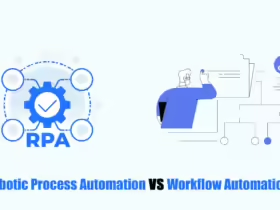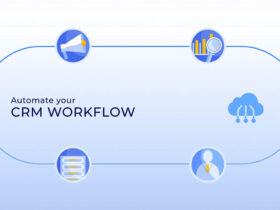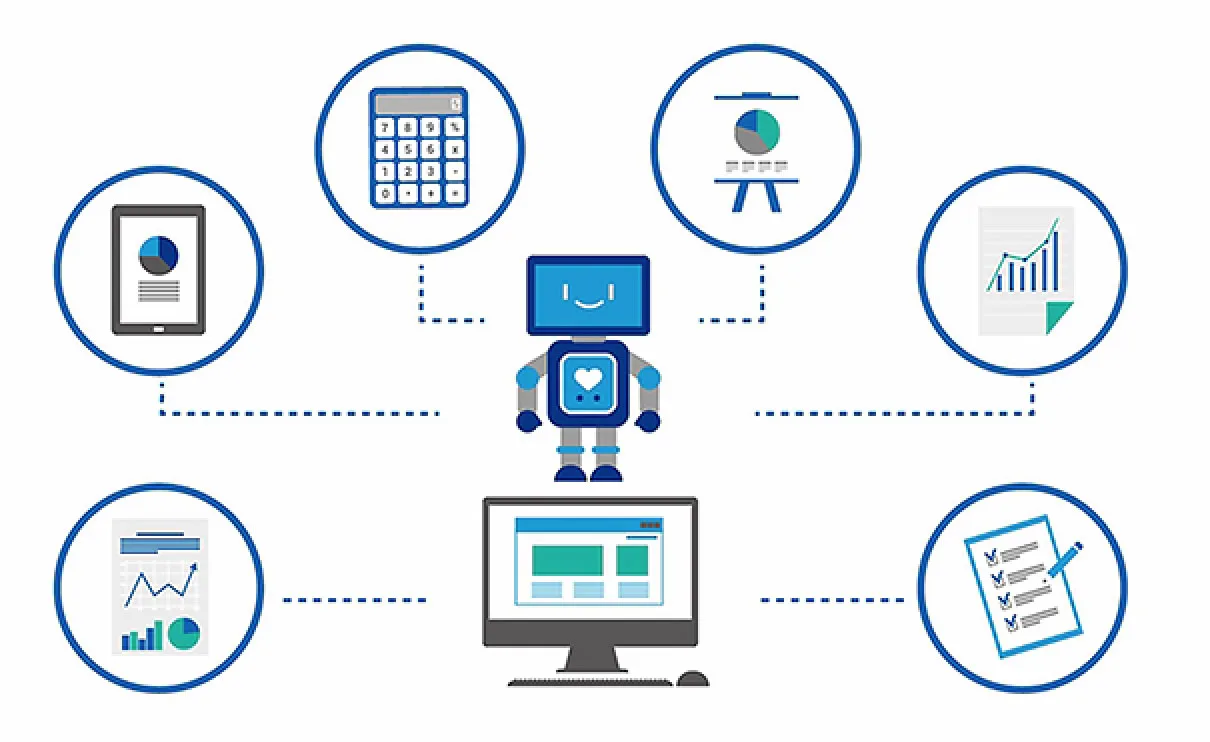Looking for tools to help streamline your business operations and improve customer experience? Then you should learn about Robotic Process Automation (RPA) and Embedded SIM (eSIM) technology.
When integrated effectively, RPA can automate the work of telecommunications companies and service providers in managing and provisioning eSIMs, with seamless, efficient, and error-free processes.
In this article, we will explore the connection between RPA and eSIM technology, implementation methods, and the benefits they bring to both businesses and consumers.
Understanding RPA and eSIM Technology
Let’s take a brief look at RPA and eSIM Technology.
What is Robotic Process Automation?
Robotic process automation (RPA) is a software technology that enables users to build, deploy, and manage software robots that simulate human actions when interacting with other digital systems and software.
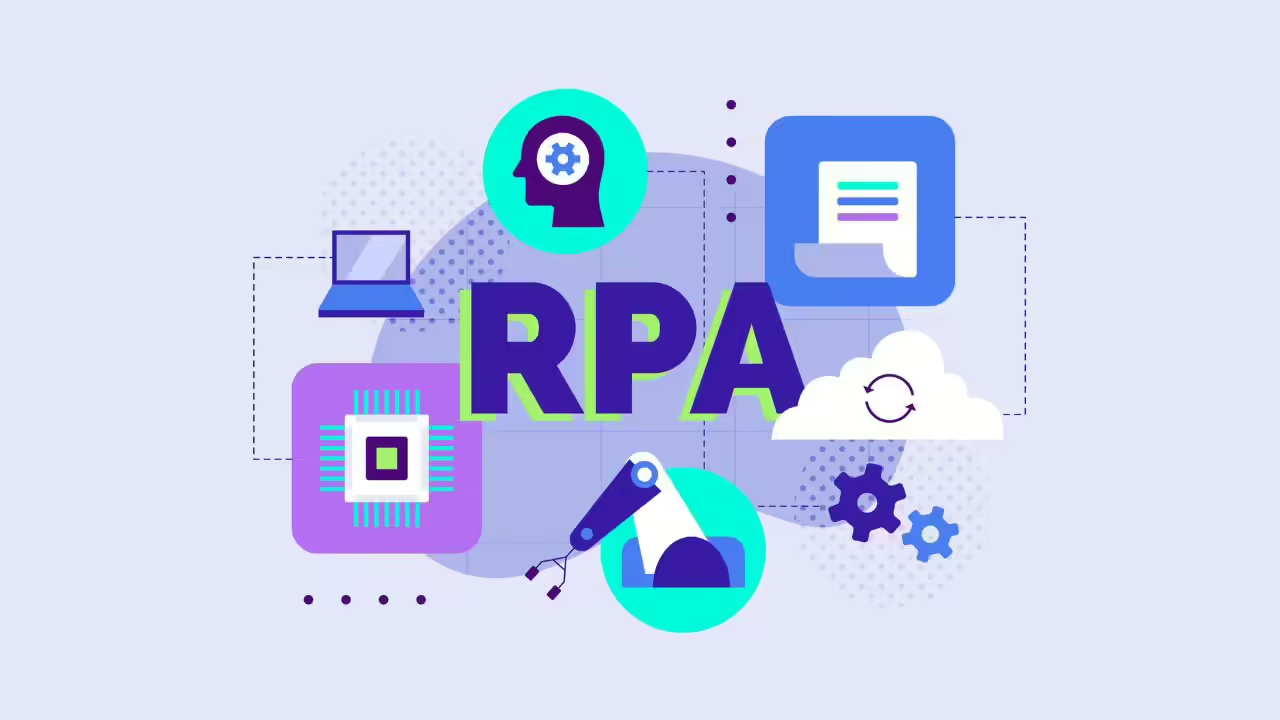
These robots can perform a variety of defined actions such as understanding information on a screen, completing clicks, navigating systems, identifying and extracting data, and many other tasks.
Unlike previous automation tools, RPA can:
- Learn from human actions and operations.
- Understand and adapt to changing environments.
- Make decisions based on predefined rules.
- Scale operations quickly without adding human resources.
Importance of eSIM Technology
eSIM (embedded SIM) is a digital SIM that allows users to activate mobile plans without using a physical SIM card. This technology is widely applied in smartphones, wearables, IoT devices and enterprise applications due to its many advantages:
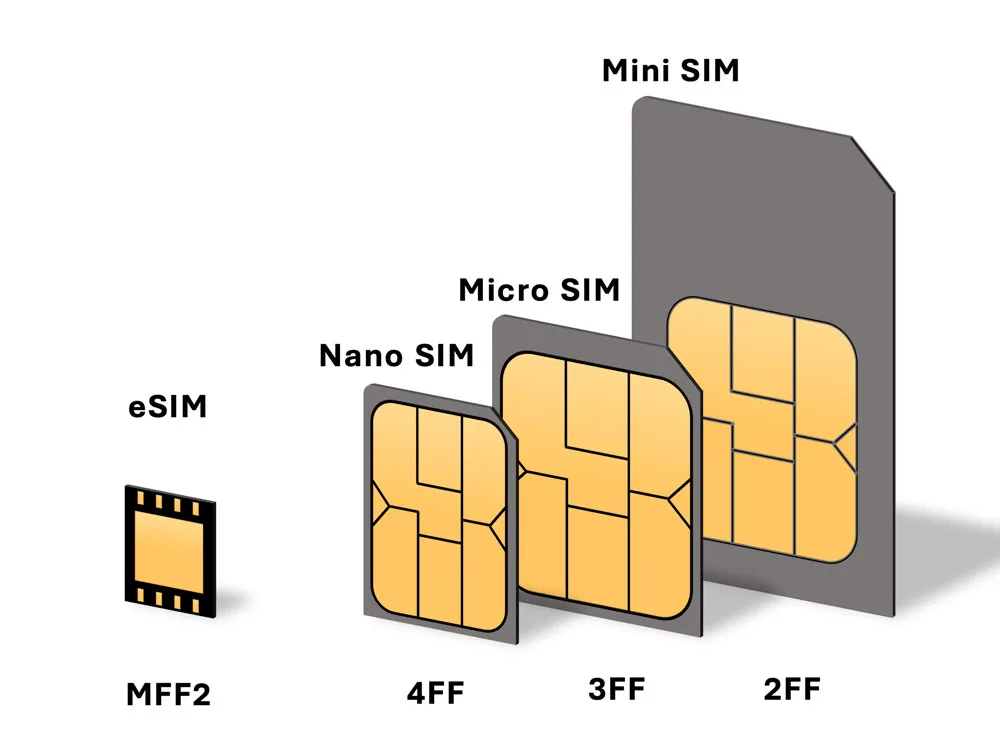
- Remote provisioning capabilities.
- Multiple profiles on a single device.
- Advanced security features.
- Reduced physical space requirements.
- Environmental protection without using plastic like traditional SIMs.
How RPA Transforms eSIM Management
eSIM management and provisioning involve many repetitive tasks, which makes them suitable for RPA implementation. Let’s explore how RPA can be integrated into eSIM operations:
Customer Onboarding and KYC Process
One of the most important tasks of eSIM provisioning is customer onboarding and Know Your Customer (KYC) verification. RPA bots can:
- Extract customer information from the registration icon.
- Identify custom information pages using optical character recognition (OCR).
- Cross-check information against regulatory databases.
- Flag discrepancies for manual review.
- Automate simple applications.
By automating these tasks, telcos can reduce customer onboarding time from days to minutes. This improves customer satisfaction and experience while ensuring regulatory compliance.
Automated eSIM Profile Generation and Delivery
Once the customer is verified, RPA can seamlessly handle the technical aspects of eSIM provisioning:
- Automatically create a unique eSIM profile.
- Generate and manage QR codes for easy activation.
- Send personalized activation instructions via preferred channels.
- Track successful activation and trigger follow-up processes as needed.
This automation eliminates manual handoffs between systems, reducing the risk of errors and delays in service activation.
Billing and Subscription Management
RPA can quickly handle complex payment scenarios commonly encountered with eSIM technology, especially for international travelers or IoT deployments:
- Automatic usage monitoring across multiple networks.
- Dynamic plan adjustments based on predefined thresholds.
- Proactively notify customers of usage patterns.
- Process payment information across multiple currencies and payment systems.
With these superior capabilities, it helps ensure accurate payment processing, as well as provide personalized upsell opportunities based on usage patterns.
How to Integrate Successfully
Below are three main steps you can follow to integrate RPA and eSIM technology.
Assessing Process Readiness
Before implementing RPA for eSIM management, organizations should:
- Identify repetitive, high-volume processes in the eSIM lifecycle.
- Map current workflows and identify bottlenecks.
- Establish clear metrics for success, including ROI expectations.
- Consider regulatory requirements and compliance needs.
This assessment phase helps you identify and prioritize automation tasks based on potential impact and complexity.
Selecting the Right RPA Tools
The market offers a wide range of RPA solutions with different capabilities. When choosing a platform for your eSIM operations, you should consider:
- Ability to integrate with existing telecom systems.
- Scalability to handle increasing transaction volumes.
- Security features to protect sensitive customer information.
- Analytical capabilities to continuously improve processes.
Among them, you can consider leading RPA vendors such as UiPath, Automation Anywhere, and Blue Prism, whose specialized solutions can be tailored to your telecom needs.
Building a Center of Excellence
Successful RPA implementations require technology and organizational alignment. A dedicated Center of Excellence (CoE) can:
- Develop standardized approaches for process automation.
- Educate employees on the capabilities and limitations of RPA.
- Provide a governance framework for developing and deploying bots.
- Measure and report on the impact of automation.
This structured approach ensures that RPA changes align with broader digital transformation goals.
Benefits of RPA-Powered eSIM Management
There are three key benefits that businesses and consumers get from RPA-powered eSIM management.
Operational Efficiency and Cost Reduction
By automating routine aspects of eSIM management, telecommunications providers typically achieve:
- 40-60% reduction in processing time
- 25-50% decrease in operational costs
- 99.5%+ accuracy in data processing
- Significant reduction in manual errors and rework
These efficiency gains allow companies to scale their eSIM offerings without proportionally increasing their workforce.
Enhanced Customer Experience
RPA-powered eSIM provisioning improves user experience, specifically:
- Near-instantaneous service activation
- 24/7 availability for customer service requests
- Consistent quality across all interactions
- Personalized offerings based on usage patterns
These improvements translate directly into higher customer satisfaction scores and reduced churn rates.
Data-Driven Insights
The combination of RPA and eSIM technology generates valuable data that can inform business strategies:
- Granular usage patterns across different networks
- Customer preferences for service activation and management
- Performance metrics for different device types
- Predictive models for network capacity planning
Based on this data, telecommunications companies can continuously improve their services to meet the diverse and constantly changing needs of customers.
Future Directions: AI-Enhanced RPA for eSIM Management
The next frontier in eSIM management involves enhancing RPA with artificial intelligence capabilities:
- Machine learning algorithms that predict customer needs based on usage patterns
- Natural language processing for improved customer service interactions
- Computer vision for enhanced document verification
- Predictive analytics for proactive problem resolution
These advanced capabilities will further streamline eSIM management while creating more personalized customer experiences.
Conclusion
Adding RPA to eSIM management offers telecom companies big gains in efficiency, customer satisfaction, and competitive edge. By finding automation spots and using strong RPA, they can revamp eSIM operations and prepare for growth.
As RPA and eSIM get better, they’ll work together even more, leading to new telecom innovations. Companies using this combo now will be leaders in the future.
For businesses or individuals wanting better connectivity, RPA-powered eSIMs provide great convenience, reliability, and performance.



